
I haven’t commented on this, but lots of the books Rob Liefeld is on during the early 1990s give him plot credit in addition to pencils and, in many cases, inks as well. Kudos to him for taking the credit that was due to both Jack Kirby and Steve Ditko (as well as many other early “Marvel way” creators). Even despite that he got such credit, Liefeld (and several others) will bolt from Marvel and form Image and other indie publishing companies in relatively short order.
This book will be the start of Deadpool and Cable’s relationship/domination of the X-verse (along with Wolverine).
It starts with a new character, Garrison Kane, who goes by Wolverine’s old Weapon X moniker.
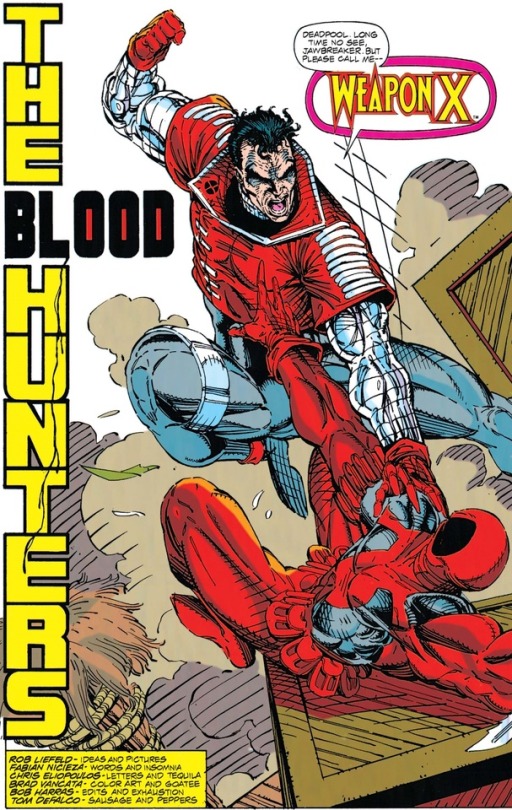
He’s locked in a multi-page fight with Deadpool.

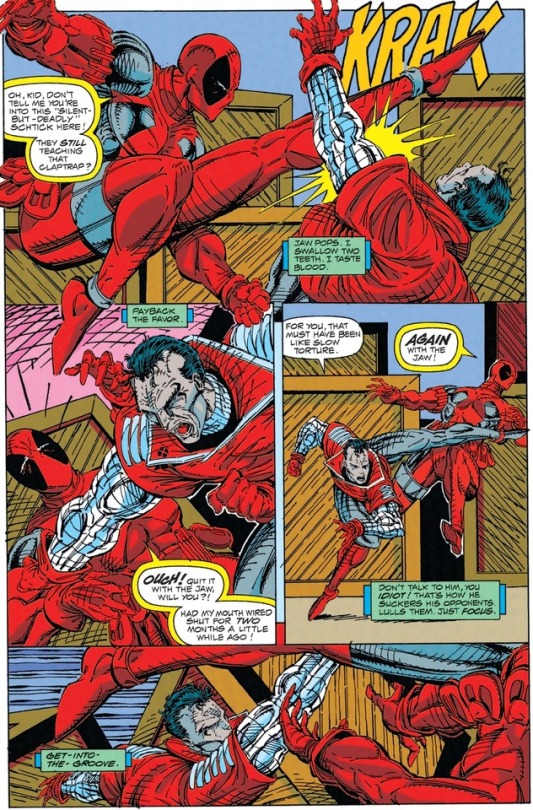
During the battle, Kane hints that both he and Deadpool originated in Canada.
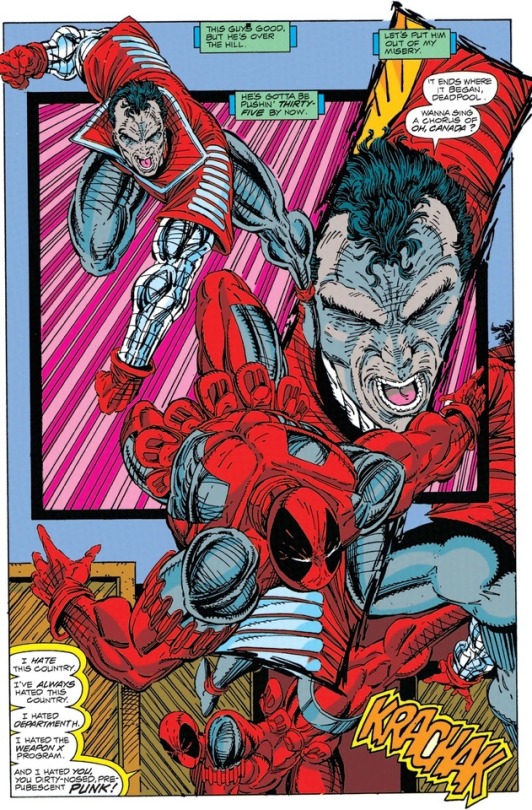

And also notes “improvements” in the program, suggesting that the Weapon X program is ongoing.

When GW Bridge shows up, we see that SHIELD is affiliated with Garrison as well.

This is more evidence, with Wolverine #50, that SHIELD had a role in the original Weapon X program. Bridge pulls Kane into his hunt on X-Force, and they discuss how Cable was M.I.A. for years and has suddenly resurfaced
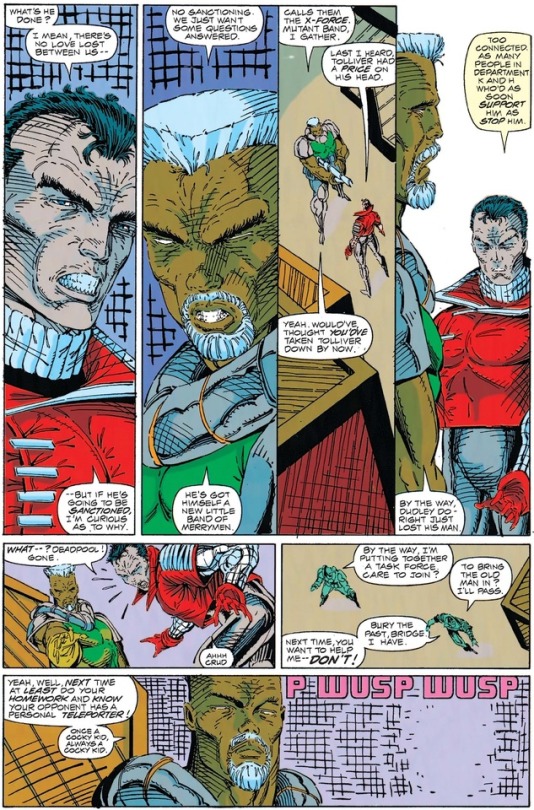
So, it looks like SHIELD/Weapon X are tracking both Cable and Deadpool. Lots of new characters with a brand new, interconnecting backstory. And also everyone can teleport.
As for Deadpool, he’s was trying to steal some weapons and Bridge and Kane stopped him. His appearance really seems to be about re-establishing him as a character central to this storyline, since he’s unnecessary to the rest of the issue—a full third of which is spent showing Cable’s new team playing a game of tag.
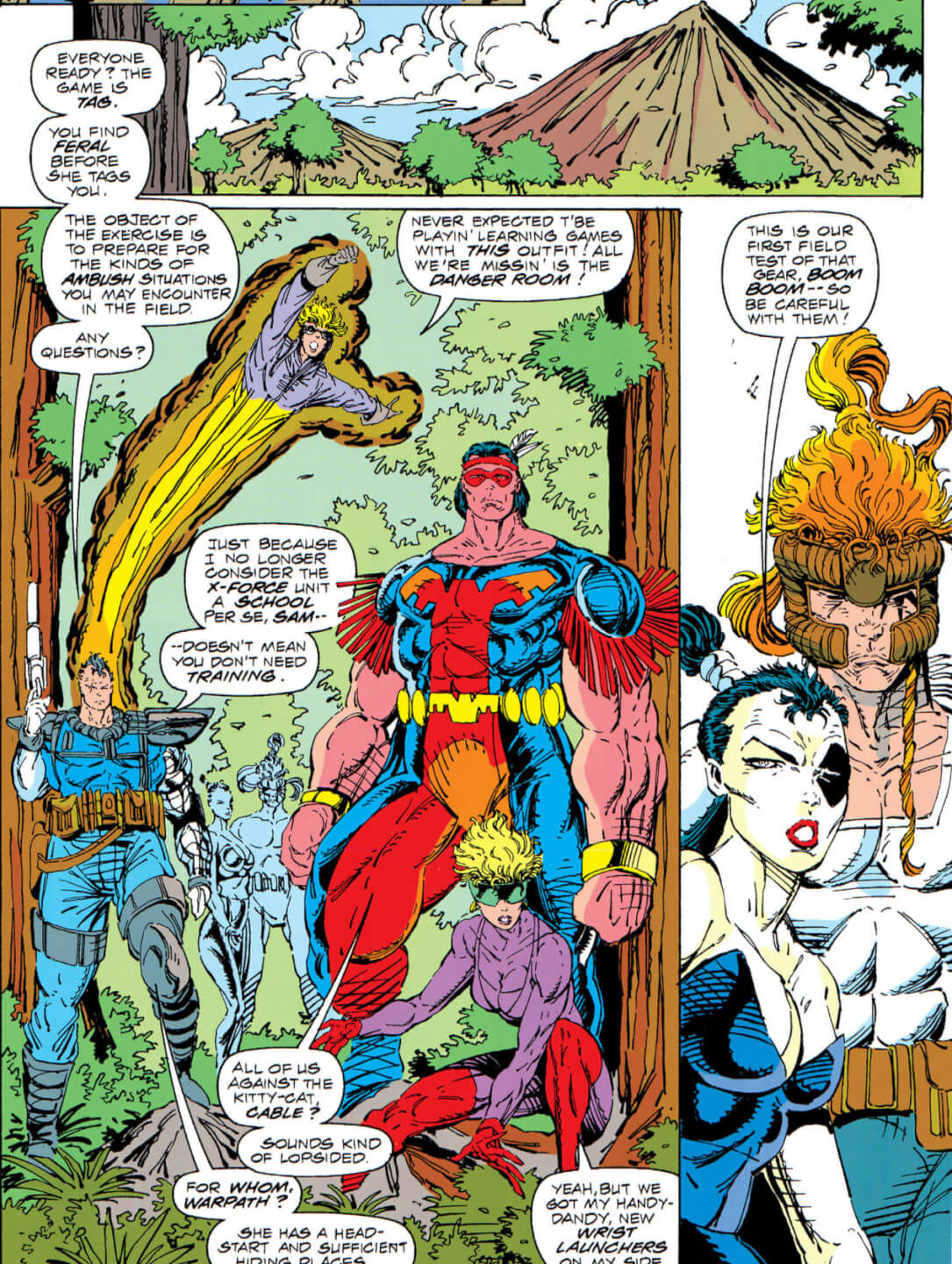
And posing quite a bit.
There are several brand-new characters on this team, and others that are relatively new and undeveloped, so a “down time” sequence like this can be good to develop character. That’s kind of what happens here, although none of the developments are all that surprising. The new wolf-girl Feral is animalistic and almost kills her teammates. Cable doesn’t care all that much about anything other than results. Etc. We do learn that Boom Boom has enhanced her powers by attaching projection devices to her wrists so she can launch her time bombs farther.
Then in the last few pages, we finally get the action starting. Black Tom and Juggernaut take over the World Trade Center, and are holding Gideon and Sunspot hostage, and the new X-Force team’s first mission is to stop them.

Before the team can arrive, Siryn is on the scene. And through the story we learn that she also knew Cable at some point in the past. I’m beginning to think I”m the only one who didn’t know him.
Then the whole gang joins together, poses so Siryn can be part of a group shot, and proceeds to get their asses kicked by Juggernaut.
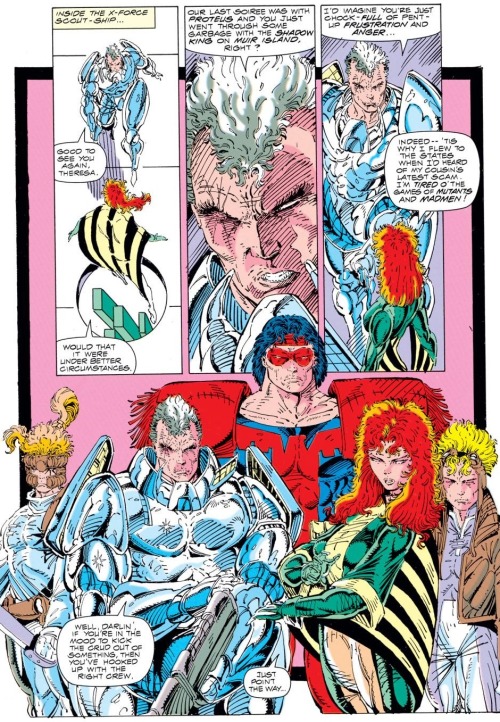
And also Spider-Man shows up, and the action moves to his new eponymous-and-adjectiveless series.

That whole issue is sideways. Literally. Including the cover.

The battle goes on for the entirety of X-Force #3 and Spider-Man #16. It’s a lot.
And the issue ends with the destruction of the World Trade Center.

Seriously. Wow.
And then back to X-Force #4, which is also sideways. And has even more fighting.

Eventually, Cable’s team starts winning.

Then Deadpool shows up to say that Black Tom is wanted by “Mr. Tolliver.”

In the end, he teleports them out of the fight.
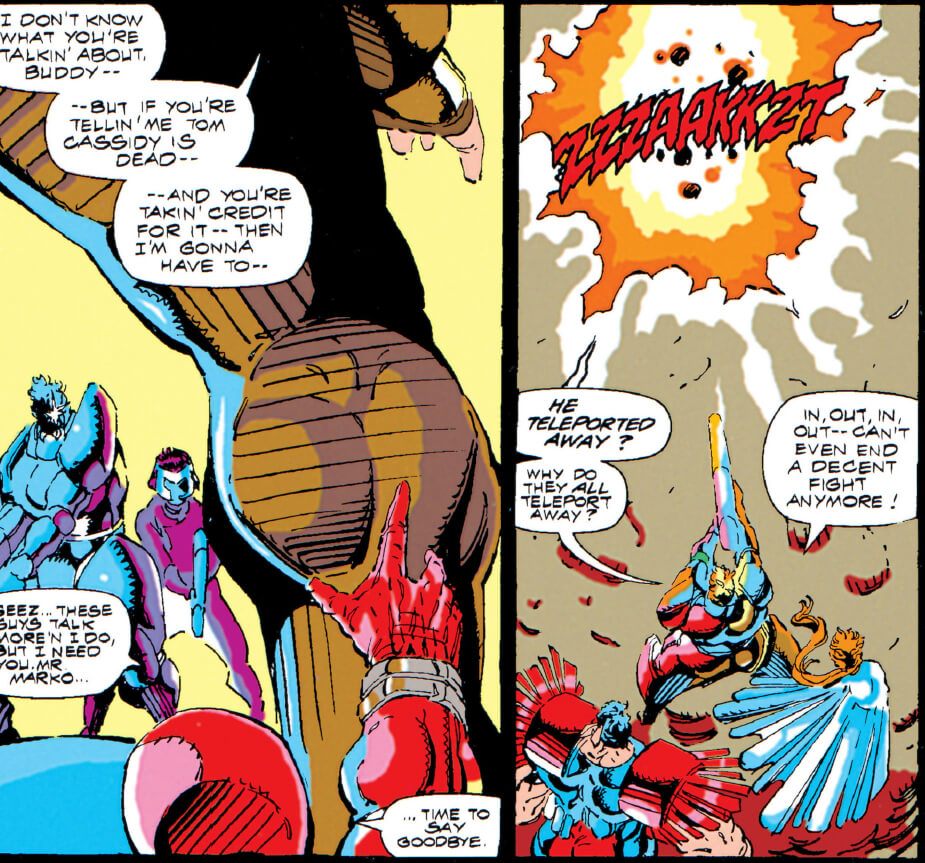
Yes, we go through two-and-a-half issues of fighting only to have them end in a draw-by-teleportation.
I don’t want to be hypercritical of these issues—I do like a lot of what these creators brought to Marvel—but these are very thin comics.
